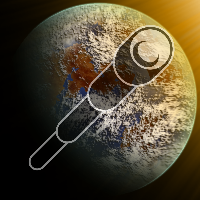Exosuit
An exosuit is an all-purpose, full-body garment which provides substantial or total protection from hazardous environmental conditions. An exosuit protects its wearer from all kinds of dangers, including extreme temperatures and pressures, radiation, chemical and biological hazards, impacts, strong inertial forces, and exposure to the vacuum of space.
Exosuits for most sophonts have three basic parts: the body suit, the helmet, and the regulator pack. The body suit encompasses most of the person within, providing a safe pressure, comfortable temperature, and overall protection in a form that poses as little impediment to the user's range of motion as possible. The helmet provides similar protection to the user's head, and additionally supplies air, water, and a computing interface directed either by facial gesture or by chip link. The regulator pack contains the filtration and recycling systems for air, water, and heat, and are often customized with additional functionality depending on the user.
Archive Data
Item type
Armor
(many are much more expensive)





Great details with the extra features and how different species use/adapt the suits.
Share your articles on Lavani's Reading List!
Thanks! I had fun pondering how each species would approach the same problems of in-person space exploration. Not only is it a question of anatomy, it's a question of psychology too!